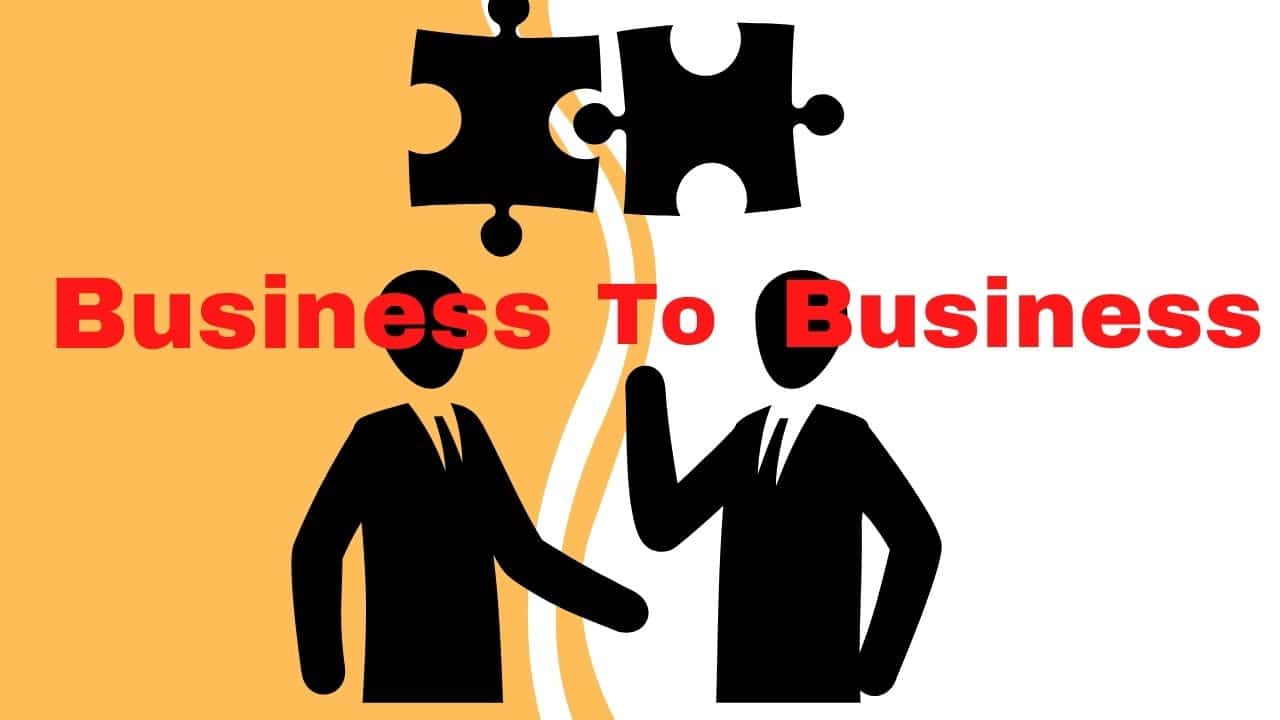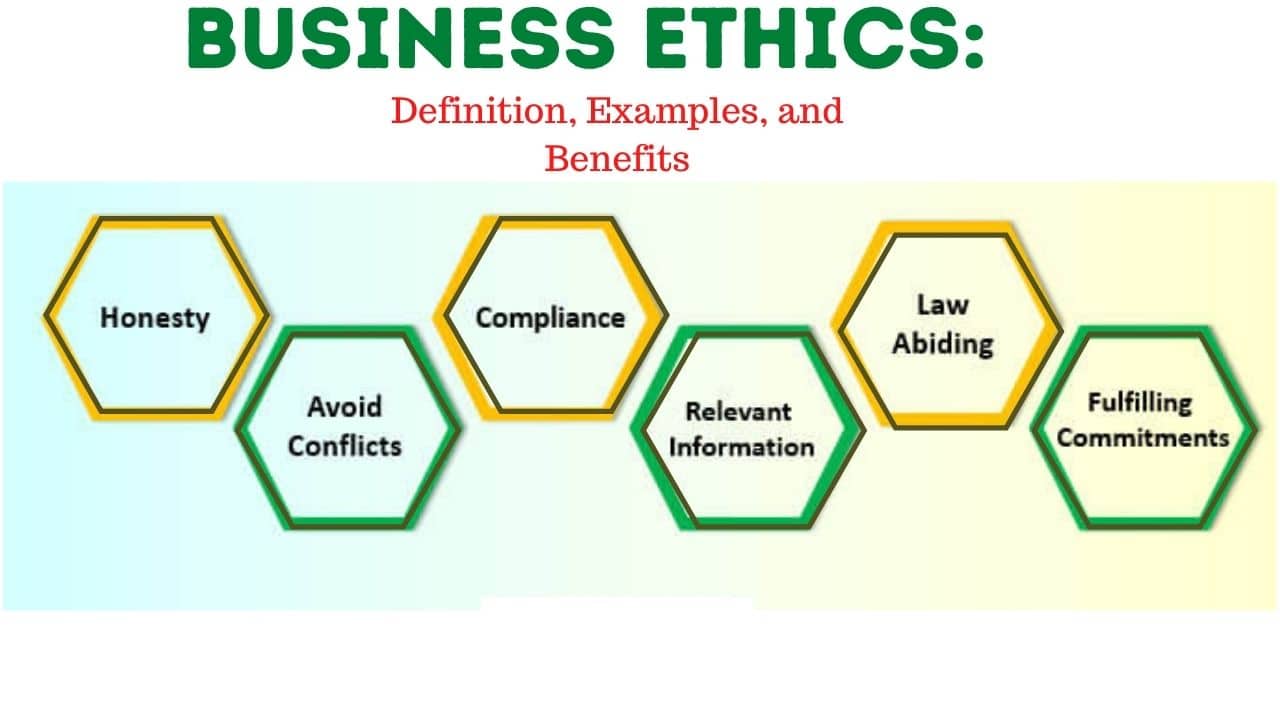This guide contains all you need to know about a business that primarily provides goods or services to other companies or businesses. A business that does this is said to operate a business-to-business model.
What Is Business-to-Business (B2B) Marketing?
Business-to-Business (B2B) Marketing is a form of transaction between companies, for instance, between a manufacturer and a wholesaler or a wholesaler and a retailer. It is a deal that is made between companies rather than between a company and an individual consumer.
B2B companies are support companies that provide what other companies need to operate and grow. Contract processors and industrial suppliers are some examples. This is in contrast to B2C (business-to-consumer) models, which are sold directly to individual customers, and C2B (consumer-to-business) models, where users offer services to a business. or influencer marketing).
B2B companies have a completely different target group: they offer the raw materials, manufacture parts, services, or advice that other companies need to operate, grow, and profit.
What are the 3 types of B2B Purchases?
There are three types of purchasing circumstances that influence how the DMU is organized and how items and suppliers are chosen: Straight re-buy, modified re-buy, and new-task purchase.
What is Best B2B Platform?
According to research, Shopify Plus is one of the safest business-to-business online storefronts available. It’s a brilliant plan for business-to-business retailers concerned with data security. Shopify Plus meets the requirements of PCI Data Security Standard (DSS) Level 1. No action is required, nor is any fee required.
Skills Needed for B2B?
The following are the required skills:
- Be Coachable.
- Be an Active Listener
- Practice Account-Based Marketing.
- Be an Avid Researcher.
- Be a Team Player.
- Learn Inbound Marketing.
- Learn Social Selling.
- Be Great with People.
Business-to-Business (B2B) Marketing Basics
So we’ve looked at some of the top B2B companies and found that they manage to focus primarily on business weaknesses in their workflow. But what should a B2B marketing plan look like?
As complicated as B2B marketing can be, it’s easy to dig into different strategies, channels, campaigns, and tactics. A plan is the best way to keep things safe and organized.
Let’s look at some of the basic “basics” that a successful B2B business should have.
#1. Define your target audience
As with any marketing plan, at a minimum, you need to know who to target. If you don’t have an accurate picture of who your customers and target audience are, you’re wasting your time. What all B2B marketing strategies have in common is that goals can be defined and refined.
It is impossible to market them all at the same time. Therefore, you must focus on your main audience. Everyone else should be subordinate to this small group of people.
Focus on an individual customer segment. This customer segment will be your image of the perfect customer. As a B2B company, you need to know exactly who and how your products/services are helping these buyers.
Do you know WHY DID NOKIA DISAPPEAR? See the The Missing Tracks here.
#2. Create a context for the target audience
Once you’ve discovered your target market, you need to create content that resonates with them. Without understanding what your customers are interested in and how they buy, you’ll have a hard time presenting, writing, and creating content that is targeted at the businesses you target.
You need to know how your buyers like to buy and what they are reacting to.
Think about it and focus on finding your motivations, pain points, and buying behavior. This puts you in the best possible position for them to stop providing your services and buy your products.
#3. Quality content
Simply put, you need to create content marketing that helps your audience learn and work smarter.
If your target market is unaware or aware of your product / service or its related benefits, the first goal is to create awareness. The key element here is creating educational content based on a series of keyword phrases and topics that potential prospects are already searching for online.
Consciousness can be built by:
- Blog posts, articles, or infographics published on your website
- Selected articles on third-party platforms
- Satisfied customer testimonials
- Reviews on sites like Facebook, Google, and Yelp
Once awareness is established, you must educate your audience on your unique approach to their problems. You would also like to learn more about its history and business organization. If you don’t give them anything to distinguish them, you are simply slapping them with a price that has no value to your business.
#4. Improvement
Businesses continue to evolve, and so does your marketing! Since your clientele develops creatures of the world around them, you must keep up with and optimize your business to serve the world’s businesses in the best possible way.
Even if you find the sweet spot of business success, what works today may not work in a year or six months.
It’s also good to know that your needs will change as your business grows. Any strategy you develop must be scalable. Scaling effectively ensures that you can continue to increase sales while meeting the demands of your target market.
Did you know that 57% of inbound marketers got leads from LinkedIn, 52% from Facebook, and 44% from Twitter? Social media helps your B2B business!
You need to incorporate social media into your strategy for better results. Move from the old traditional meeting, calling, and tactics methods.
If you’ve shied away from Twitter, Facebook, and Instagram because you think it doesn’t work for businesses that serve other businesses, you’re missing out on a great opportunity.
When creating your social media strategy, consider the following:
- What is the personality of your brand and how will we stand out?
- Who is your target audience?
- What social platforms will you use?
- What type of content will you post?
- How do your competitors use social media?
- What are your goals?
- What social media metrics will you use to measure your efforts?
By answering all these questions, you can effectively execute a successful social media plan and adjust your strategy if necessary.
Which Websites are B2B?
- HubSpot.
- MailChimp.
- Dropbox
- Asana.
- Hootsuite.
- Salesforce.
- Trello.
Business-to-Business eCommerce
B2B e-commerce or business-to-business e-commerce involves the online sale of products and services between businesses through an online sales portal. This is different from B2C (Business to Consumer), which describes online business between a company and individual customers (not a business unit).
Business-to-business e-commerce ( B2B e-commerce) comes in different ways.
#1. Acquisition optimization
Manufacturers that depend on a constant supply of raw materials must maintain large stocks to ensure that production continues without interruption. When stocks get too low, manufacturers run the risk of not finding a supplier who can deliver materials on time.
Maintaining these stocks requires a large team to work with multiple suppliers to get the right quantity, quality, and price. Accounting departments work closely with this team to reconcile data with vendors.
E-commerce helps automate much of this process for businesses. For example, an e-commerce system can constantly monitor raw material stocks of manufacturers and stocks of suppliers. At the right time, the system can automatically activate an order to the best supplier. When operated efficiently, this system can help manufacturers operate with lower inventory levels, obtain better prices, and reconcile accounts in real-time.
#2. Channel management
Just as an e-commerce system can help streamline acquisitions, it can also streamline transactions with agents, affiliates, and merchants that a business uses to sell.
By integrating an accounting system into partners, companies can ensure that an extensive coordination process does not take place later. Additionally, sales and inventory levels can be monitored in real time to make the right channel decisions.
#3. Processing order
External logistics partners can help with requirements like delivery and warehousing for online sales. As customers demand faster and more accurate delivery cycles, e-commerce systems can take care of the logistics. For example, when a customer orders a product from Amazon, the online store communicates electronically with a shipping partner who ships the product to the customer’s door.
Advantages of Business-to-Business (B2B) eCommerce?
In essence, B2B e-commerce helps as it transfers and synchronizes data in real-time and shortens cycle time for businesses. Algorithms can use real-time data to support sales and marketing, and inventory levels can be managed efficiently through automatically triggered order placement. All of this translates into higher productivity, lower costs, better quality, and faster delivery.
Any business can create a B2B e-commerce website or participate in online marketplaces as a supplier. Buyers can set up websites where they can post their requirements and see sellers’ suggestions. Sellers can create websites for buyers to search for deals and place orders, just like B2C e-commerce systems could work.
Companies of all kinds can participate in virtual markets that try to unite buyers and sellers. These marketplaces can be most beneficial to small businesses that may not have the need or desire to develop and maintain their own e-commerce website.
Business-to-Business (B2B) Companies
The following B2B companies have improved upon their marketing strategies by successfully targeting precise audiences, creating meaningful and engaging content, optimizing their business efforts, and buzzing social media with great content.
#1. We work
WeWork was founded in 2010 with the goal of building a shared office space and community. If you browse their website and photos, you will see that they created an experience for businesses and entrepreneurs – they created the ultimate office space.
WeWork fosters a new spirit in the workspace that you need to “lead a life, not just a life” (what better emotional/personal connection can you make with your prospects?).
WeWork is an incredible example of a B2B company as it has a large office space and is constantly developing the research behind office space and the use of thousands of different companies. In this way, they position themselves as the company with the most valuable first-hand knowledge about how jobs are best done and what people need in the modern workplace.
WeWork looks to the future of its home and small business consumers. They evolve with your market, making your customers feel more productive and reconsidering their basic needs to get the job done. This can be an inexpensive way to do business and change the way we go to the office. They market well and inspiring people to work the way they prefer is an ever-evolving business.
If you’re a small business, they really meet your need for profitability, flexibility, and style.
#2. Slack
Slack is where workflows run. This is where the people you need, the information you share, and the tools you use to get things to come together. Slack provides a communication platform where your business team can come together to work together effectively.
With effective communication channels that can be organized by project, topic, or team, a messaging app has never been more useful to a business. If you have a business where you have a lot of moving parts, distant people, and a lot to organize, Slack makes sharing digital content and a workspace a high-quality experience.
Hundreds of people around the world are contributing with many stakeholders who need to stay informed. Slack’s ease of communication helps teams drive value at this rate and at this scale.
Because of this, Slack is an incredible example of a Business-to-Business (B2B) business that scales business communications. So if you need a communication channel that helps your business team members benefit from projects and share information effectively, efficiently, and quickly, Slack can help!
#3. Upwork
Upwork is a talent acquisition solution for businesses looking to build their teams and uncover individuals who can make an impact right away. The company’s network of talent and agencies produces skilled people with a variety of skills such as development, design, writing, marketing, and customer support, who are accessible to assist with projects on a long or short-term basis.
#4.MailChimp
Mailchimp is the world’s largest marketing automation platform. It’s like a second brain helping millions of customers, from small ecommerce stores to large online retailers, find their audience, connect with their customers, and build their brand.
Mailchimp helps businesses send better email marketing and email campaigns. This attracts companies struggling to pay the best designers, much less a design team, to create quality content.
Whether you’re selling your products, sharing big news, or telling a story, Mailchimp’s campaign builder makes it easy to create an email marketing campaign that’s best suited to business news.
Learn about Business Exit Strategy, It will benefit you a lot.
#5. Atlas
Atlas is a direct employer of record (EOR) software provider that helps organizations with border and talent expansion. The technology allows for a virtual HR space, a customizable dashboard for global planning, the management of employee information, and the operation of payment activities. Some of the industries Atlas works with are government organizations, life sciences, and non-profits.
#6. Ingage
Ingage is a cloud-based presentation software that supports sales teams in closing agreements. The term “responsibility” refers to the act of determining whether or not a person is responsible for his or her own actions. The company also provides a mobile app that makes it easier to manage material.
#7. Kunai
Kunai is a digital sourcing platform specifically for fintech and health tech firms. The organization specializes in technical staffing and aids candidates with the vetting, interviewing, and onboarding processes. Kunai also attempts to construct the “dream team” and use API solutions for each client, so new products may develop faster. This group frequently consists of developers, designers, product managers, and project managers.
#8. Unity
Unity delivers real-time 3D creation capabilities that creators across sectors can use to bring their thoughts to reality. A range of products are available from the company to promote revolutions in gaming, cinema, manufacturing, construction, and education, with tools provided for AI-assisted workflow, augmented reality, and mistake tracing.
Is Nike a B2B Company?
Nike is a B2C company. Like Coca-Cola, Nike is a household name. Similar to Coca-Cola, Nike sells its products through retail and wholesale channels.
What is B2B Order on Amazon?
Amazon B2B, often known as Amazon Business, is a program that allows registered businesses to take advantage of various purchasing options on Amazon in order to purchase various business products. Businesses of any size, wholesalers, and manufacturers can all engage in buying and selling transactions with one another through the platform, and they can obtain discounts based on the quantities that they order.
What are the 4 Types of B2B?
Below are four basic categories to assist you in better understanding the various sorts of business customers in B2B markets:
- Producers
- Resellers
- Governments, and
- Institutions.
Conclusion
There is really no single strategy for Business-to-Business (B2B) marketing. However, it’s important to stay current and build a strong brand presence to increase conversions and ROI and improve your game.
You can check for Hot new business ideas 2022 with 100% success rate. Find 10 of them here (+ all you need)






